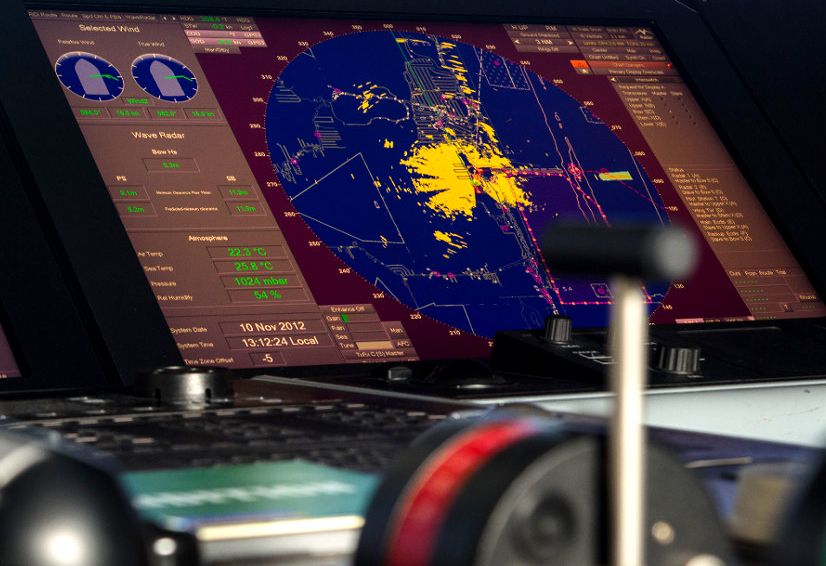AV Programming
We are pleased to bring Patrick Murray in as regular feature in Superyacht Technology Magazine.
Right now, somewhere in the Med, a power supply is about to die and there is nothing anyone can do about it. It could provide power for any one of those little black boxes that are strung together to make up your AV, lighting or some other system. No one will know about the failure until a guest decides to watch some TV. They will press a shiny button on an iPad and – nothing will happen.
Remote management is a good idea for almost every type of system. Being able to login to a dashboard from anywhere gives you the power to know what the status of your systems are and even control them without getting on a plane. Email and text notifications can be automatically sent when certain thresholds are met or when devices go offline, giving you a chance to act before things get out of hand. Data collection is an overlooked feature of the cloud that is shrouded in mystery, fear and misinformation. Location tracking and video monitoring are also cool features that may or may not be a good idea depending on your situation.
There are many remote monitoring systems available. They usually require some hardware to connect to the vendor’s cloud application. The cloud dashboards are adjustable to some degree, but for the most part the look and feel is limited.
No two boats are the same though. On many vessels the mix of systems and functions are one of a kind. That’s why an enormous amount of time and effort is spent designing custom touch panel interfaces. There is no such thing as a one-size-fits-all interface for comfort and entertainment systems on luxury yachts. While remote management may be thought of as something only for engineers, the uniqueness of your yacht could make a custom application something to consider.

Cloud services from Amazon, Microsoft, IBM and others make deploying custom applications in the cloud cheap, scalable and accessible to anyone with an internet connection. Encryption keeps your data private while in transit and new programming tools make the job of creating a cloud application more approachable than many expect.
Monitoring and Control
The most useful monitoring dashboards tell you at a glance if everything is working properly. A big green check mark and a few words like “All Systems Go”, is what you want to see most of the time. Drilling down to the system, sub-system and component levels gives you more detail of the current status. A pre-configured dashboard can never predict what that menu structure would look like, so the most useful dashboards should be custom-made.
And what about actually controlling things remotely? Does that ever make sense? If you are the guy on the other side of the phone trying to help troubleshoot a problem, it actually helps a lot to press the button yourself and observe the result. Exposing controls on a cloud based dashboard protected “only” by a username and password is something that needs to be decided on a case-by-case basis. What do you think?
Notifications
Remember that power supply that caused all of those problems? What if you monitored the online status of the device it was powering? You would have been immediately informed by email or text that something went offline and been able to take action before the guest ever noticed. Cloud applications also make it easy to change who gets notified without touching the on-board systems.

Data
When collecting data with a custom application, you retain control and ownership of your data. Your agreement is directly with the cloud provider and usually says that they will only store the data for you and never view, analyse or share it with anyone else.
So why collect data? To analyse and improve. In the heat of the battle, your main concern is getting everything running again. But looking at a performance graph over a cup of coffee at the end of a busy season may give you the insights needed to prevent some of those battles the next time around.
The easiest way to improve the user experience is to find out what is never used and remove it. If a lighting scene or an AV source is never selected, you can remove those buttons and your system immediately becomes easier to use. At the beginning of a project, it is hard to predict what is actually needed, so many systems tend to include as much as possible. In real life, there are parts of every system that are never used. Collecting data tells you the truth in black and white and helps you make better decisions.
New Opportunities
Custom Remote Management Applications are a great opportunity for Shipyards and AV/IT Integrators to actively monitor their customer’s systems 24/7 and provide world class support. Emergency site visits can be dramatically reduced. And when a technician needs to make a service call, he or she can arrive prepared with the proper replacement equipment and tools in hand.
The power of notifications to pro-actively address issues before end users are aware of them can strengthen and maybe even save some customer relationships. Technical support means you have someone to call when something goes wrong. Real-time support means they call you.
Improvements in the user experience gained from data-based decisions are yet to be seen, but the only way to take advantage of them is to start collecting data now.
Patrick Murray
LearnAvProgramming.com


